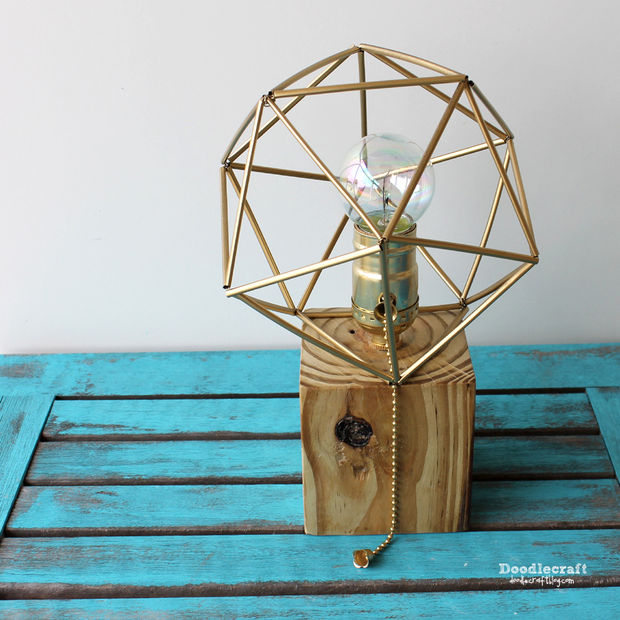
The rise in content marketing has amplified the need to speak an audience’s language fluently. Across industries, brands are searching for ways to reach consumers in relevant but engaging ways. It’s no wonder, then, that they’re courting collaborative DIY communities.
Home Depot was hoping to channel this energy to push its in-store DIY workshops. With the help of Instructables, it focused on one specific event: a lighting workshop. But rather than just producing a few themed tutorials for DIY projects, the Instructables Design Studio took advantage of an annual site contest for lamps and lighting.
“It’s something that the Instructables community loves,” said Audrey Love, community manager at the design studio. “We’ve run it before, and it’s performed really well. When we have the numbers to back it up, that’s awesome.” But the real keys to success lie in the team’s embedded approach.
The power of community whisperers
The campaign had two main levels of engagement. First, users were encouraged to submit their own tutorials for DIY lighting devices, and then the winners were determined by the community through a simple voting system. This was all inspired by projects created by the Design Studio team members.
“We post them as ourselves,” said Randy Sarafan, Design Studio manager. “We’re actually not posting as the Design Studio. There’s no better way to engage with our users than talking to them in their own language, and a lot of people on my team actually started as members of the website.”
Ad position: web_incontent_pos1
Posting under their own names is a definite advantage. The sponsored projects are still clearly marked, but by having a history of participation and collaboration, there’s a rapport with the audience that many other sites lack.
“We wouldn’t garner the success we do as community members if we just published great ideas,” said Love. “To engage with the community gets us so much further. And it’s exciting for the community members to get feedback from us. It definitely goes both ways.”
Letting the brand inspire and educate
Real occasions of what’s increasingly called “branded play” can have a strong effect on the consumers they target. “When a community member or somebody who’s just coming to Instructables sees that project, they get inspired by that,” said Love.
“Think of it as a means of granular storytelling. We’re talking about this one skill that uses one particular product. It’s a really native way to bring in the brand identity and assert it in a more comfortable way. It gives us a chance to be brand champions, and we educate our users on the product, as well.”
Ad position: web_incontent_pos2
Ideas flow from a solid understanding of the brand. “We see what makes sense for us,” Love continued. “One small project idea, like a light-up bike project for RadioShack, used micro-controllers that were interesting to our community. So now we have ‘Make it Glow,’ our micro-controller contest: programming that we run for RadioShack every year.”
Engaging campaigns can have flexible goals
These interactive campaigns support a variety of business goals depending on what the agency or brand is looking to accomplish. “Sometimes it’s brand-specific,” said Love. “Sometimes it’s product-specific, educational or a cross-marketing thing.”
“Some are just trying to raise awareness for the brand in general, and the projects may not even directly relate to their products,” said Sarafan. Many clients benefit from taking this ancillary route, especially when it involves community collaboration.
And of course, the interactive approach isn’t for every brand. “But for the most part,” Sarafan added, “This is hands-down the best way to engage.
“I really think it’s a matter of community: If you’re targeting the right one in the right way, people really respond well. So if it’s a coding website and you’re asking them to engage by coding, they’re going to be responsive. I don’t think it’s unique to just makers.”
More from Digiday
Sliders test article
Amazon bulldozes into new markets, upending the status quo and challenging rivals. Today, it’s the turn of the ad-supported streaming world, and Amazon is coming out of the gate strong. Why, you ask? Because Amazon is serving marketers an opportunity beginning today to reach a whopping 115 million monthly viewers in the U.S. alone, courtesy […]

How CTV and DOOH are growing this political season for smaller agencies
Connected TV and digital out-of-home are playing a bigger role in upcoming elections and politics – especially for smaller agencies looking to place clients’ dollars.

CMO Strategies: Advertisers identify the top attributes on ad-supported streaming platforms
This is the third installment in Digiday’s multi-part series covering the top ad-supported streaming services and part of Digiday’s CMO Strategies series. In this report, we examine which ad attributes matter the most to marketers on streaming platforms.
Ad position: web_bfu


